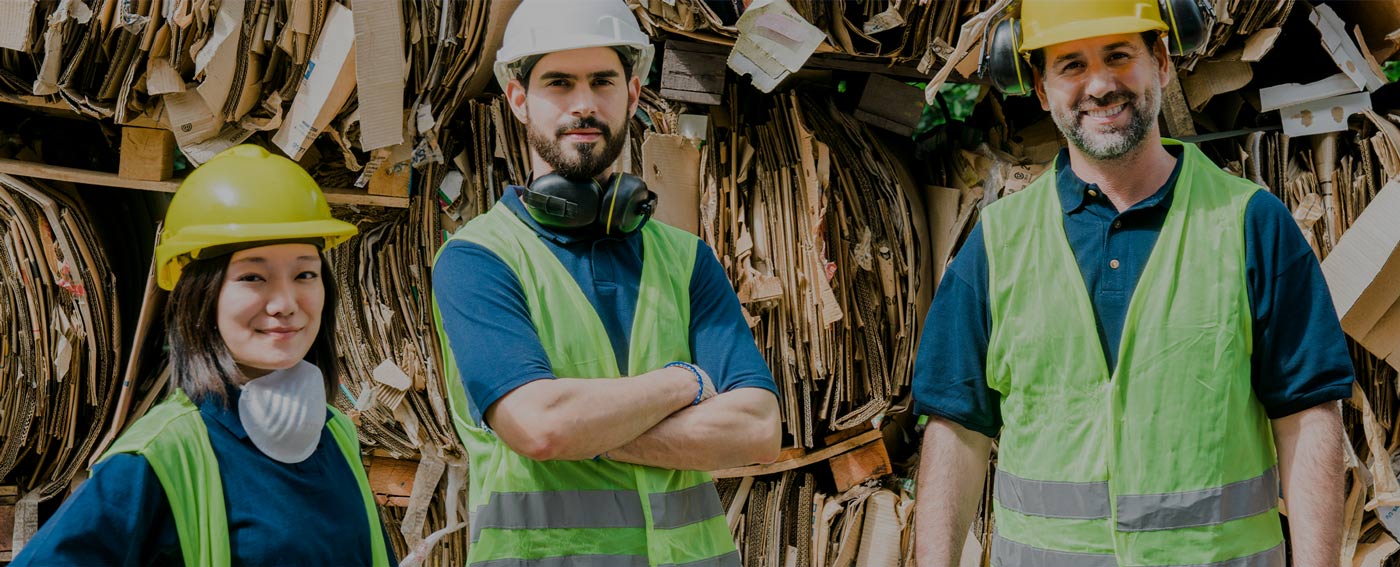the Cycle
Resources
Reimagining Sustainability
Our world faces a growing challenge to address how people create, use, and discard the materials that make our lives. Finite resources and growing populations drive the urgent need for sustainability — and for decades, global leaders have framed this need through the lens of “waste.”
But to us, it’s not about waste. At EREF, we’re challenging the world to reimagine what “sustainability” really means. To realize that waste isn’t something to get rid of; it’s a resource.
Manufacturing
Zero Waste is Unrealistic
Manufacturing processes, regardless of the industry, inevitably generate waste. This is primarily due to inefficiencies present in the prevailing technologies and methodologies. From the initial stages of extracting and refining raw materials to the actual product manufacturing, waste is a constant byproduct, manifesting as emissions, scraps, and defective items, among other forms. The aspiration to achieve a completely zero-waste benchmark, though commendable, is currently unrealistic given the limitations of our technologies and the scale at which global manufacturing operates.
Poor Packaging Design
Poor packaging design compounds the waste problem inherent in manufacturing. When products are encased inefficiently, there’s an unnecessary surge in material consumption. This not only wastes resources but also generates excessive waste when these materials are disposed of. A significant portion of this wastefully designed packaging isn’t recyclable or reusable, further stressing our waste management systems and landfills. Additionally, inefficient packaging can lead to escalated transportation costs and environmental impact, as it may not be optimized for shipping and storage, thereby demanding more space and resulting in greater emissions.
Delivery
Inefficiency
Routes that aren’t optimized result in longer travel distances, greater fuel consumption, and higher emissions. Moreover, inefficient coordination can lead to partial-load shipments or, conversely, overburdened delivery vehicles, both of which are resource-intensive. This can increase costs for businesses and strain environmental resources due to the excess emissions and energy consumption.
Food Spoilage
Without proper temperature-controlled environments, or if there are delays in the delivery process, perishable items can quickly degrade or become unsafe to consume. This not only results in a direct loss of resources but also poses health risks to consumers. The implications of food spoilage are broad-reaching: from the wasted resources in production and transportation to the added burden on waste management systems when these spoiled goods are discarded.
Excessive Shipping Design
While they might protect the product, they consume a disproportionate amount of resources. Such over-engineered designs result in higher material consumption and waste generation. Additionally, they can lead to inefficient space utilization during transport, necessitating more trips and, by extension, greater fuel consumption and emissions.
Use
Litter
Whether it’s food wrappers, beverage containers, or plastic bags, improperly disposed items contaminate urban landscapes, natural environments, and waterways. This not only poses a threat to wildlife but also disrupts ecosystems and can lead to long-term environmental degradation. Litter, beyond its environmental impact, also affects the aesthetics of a place, potentially deterring tourism and decreasing property values. Furthermore, the management and cleanup of litter require significant resources of time and finances.
Wishcycling
A growing concern in the realm of recycling is wishcycling, where individuals place non-recyclable items in recycling bins in the hope or mistaken belief that they’re recyclable. While the intent might be rooted in a desire to do good, the result is contamination of recyclable materials. This can compromise the quality of recycled products, increase the cost of recycling processes due to the need for sorting and removal of contaminants, and, in some cases, result in entire batches of otherwise recyclable materials being sent to landfills.
Low Awareness
Without proper knowledge, consumers might misuse products, leading to faster degradation or inefficiencies. A lack of understanding about correct disposal methods can increase the burden on landfills, contribute to littering, or exacerbate problems like wish-cycling. Educating the public is vital, as awareness plays a pivotal role in influencing consumer behavior and promoting sustainable practices.
Disposal
Weak End Market Demands
If businesses and manufacturers don’t prioritize or find value in using recycled materials, the entire recycling system can be undermined. A weak demand means that even if items are correctly sorted and processed, they may not find a second life in new products. This results in stockpiles of materials that consume space and resources and can lead to those materials eventually ending up in landfills. Furthermore, low demand can suppress prices for recycled materials, making it less economically viable for recycling operations to continue. In turn, this can lead to reduced investments in recycling infrastructure and technology.
Doesn’t Meet Standards
Materials that are too contaminated, degraded, or otherwise do not meet these necessary standards might be rejected for recycling. This poses a significant problem, as individuals and businesses might believe they are contributing positively by sending items for recycling, but if these items are rendered non-recyclable due to contamination or other issues, the effort goes to waste. Not meeting standards can result in higher costs for recycling centers as they need to sort out and dispose of unusable materials.

